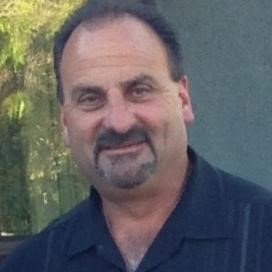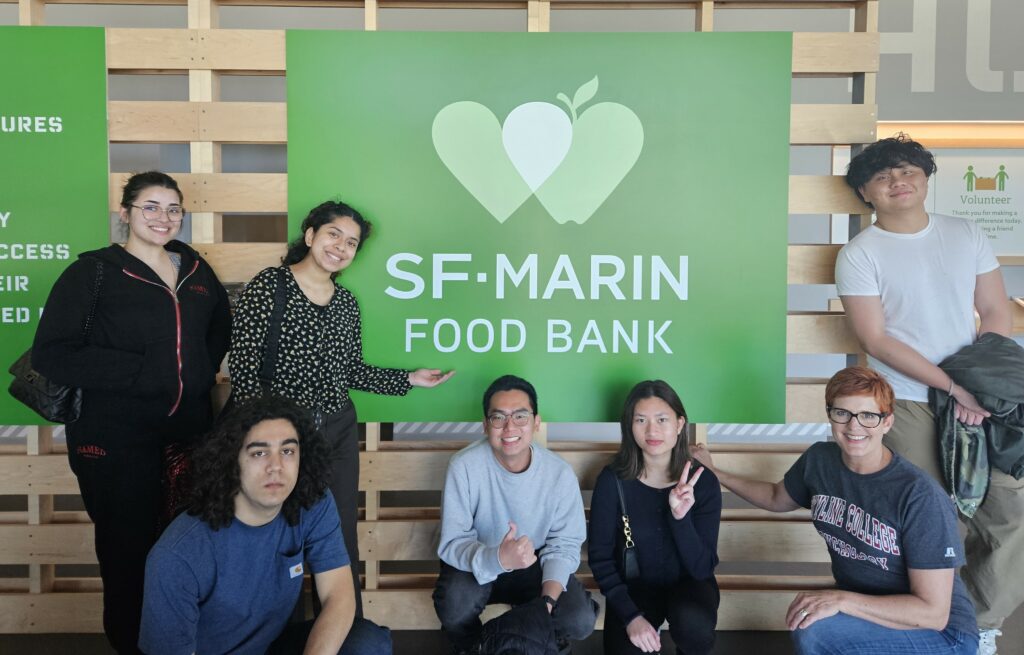Late last month, the American Physical Society’s Division of Nuclear Physics held its annual Fall Meeting in New Orleans, LA, and the Skyline nEXO group was there. Three students, Sara Ellingsworth, Jonathan Mariano-Smith and Paul-Frederik Schubert attended the conference in person and one student, Carol Sanders, participated virtually. The students were accompanied by Prof Kolo Wamba, also attending in person, and Prof Emilie Hein, who attended virtually. This was the first time since the pandemic that the meeting was held predominantly in person.
In a session titled “Inspiring the Next Generation,” Prof Wamba gave a talk on the nuclear physics and nuclear physics-related Diversity, Equity and Inclusion (DEI) work that the Skyline nEXO group is doing and shared original content that each Skyline nEXO student had contributed to. The talk was extremely well received. A few people, including session chair Dr Sharon Stephenson (a program manager at the US Department of Energy Office of Science [DOE-SC], office of Nuclear Physics, who helps manage the funding for Skyline’s nEXO student traineeship program), commented on how Skyline is blazing trails as the sole community college to be funded by a DOE-SC “Research Traineeships to Broaden and Diversify Nuclear Physics” grant award. This very impressive achievement is a testament to the caliber of our amazing administrators, faculty, classified professionals, and students. “People go to community colleges for economic reasons,” noted one audience member during the Q&A portion of Prof. Wamba’s talk, “community colleges are the wave of the future. What you’re doing is groundbreaking.”
DEI were important themes of 2022’s APS DNP meeting, as well as in the broader American Physical Society. Founded in 1899 by 36 physicists at Columbia University with a mission “to advance and diffuse the knowledge of physics” throughout society, the organization has grown considerably due to increased public interest in science beginning in the 1960’s. In recent years, APS’s outreach efforts have been broadened to address the concerns of historically underrepresented groups in physics, establishing committees and publishing a climate survey to address barriers experienced by non-minority LGBT, non-minority non-LGBT women, and minority scientists. There was, additionally, considerable interest in the portion of Prof Wamba’s talk that dealt with DEI initiatives that we are working on here at Skyline, such as the nEXO collaboration’s DEI information hub and newsletter (initiated and led by Prof Hein), and its publications equity subcommittee (led by Prof Wamba).
A panorama of cutting-edge nuclear physics research, topics of presentation at the meeting also included stellar nucleosynthesis, quantum chromodynamics, and neutrino physics. In one particularly engaging talk, postdoctoral researcher Dr. Wei Jia Ong of Lawrence Livermore National Laboratory discussed progress in the study of novae or exploding stars. In addition to explaining how advances in computation as well as rare isotope beam production have accelerated the accuracy of astrophysical models, she even drew a few laughs from the sleepy morning audience of physicists.
Some presentations included highly technical language while others were more accessible to a general audience. In one fascinating talk, William R. Hix of Oak Ridge National Laboratory explained, in an exceptionally pragmatic way, the importance of multi-messenger astronomy— observational technology that can simultaneously detect multiple kinds of signals like gravitational waves, photons, and neutrinos—in the study of supernovae.
The portion of the meeting that was arguably the most important were the plenary sessions on assessing and mitigating the threat posed by nuclear weapons, particularly as it pertains to the ongoing crisis in the Ukraine. These sessions were nothing if not horrifying, and they drove home the point that the world is now the closest it has been to global nuclear war since the Cuban missile crisis. One particularly sobering presentation was given by Rutgers University Prof Alan Robock, a leading expert on the theory of nuclear winter. This is the idea that a large-scale global conflict involving strategic nuclear weapons would cause tens of millions of metric tons of smoke and ash to be released high into the atmosphere, where it would block out the sun and bring about a perpetual global winter reminiscent of the most recent Ice Age. A world in the grips of nuclear winter is one in which all forms of agriculture are impossible, and billions of people starve to death as a result. In his talk, Robock showed the results of his group’s calculations and computer simulations of the aftermath of a nuclear exchange between the US and Russia. As University of Maryland College Park associate provost Dr Steven Fetter pointed out in the talk preceding Robock’s, such an event is most likely to occur as an unintended side-effect of the Ukrainian conflict – for example, due to a mistake, malfunction, or other mishap – and has an increasing probability as the war is prolonged. In the most optimistic of the Robock simulations, about 30% of the world population is lost to starvation within the year following a US-Russia nuclear confrontation. It doesn’t take much imagination to realize that the other 70% of humanity would perish in the year or so that follows, due to the inevitable disruption in basic human services and global supply chains that occurs when nearly a third of the world’s people are wiped out, essentially all at once. The main takeaway from these plenary sessions was the existential urgency of nuclear disarmament and the dire need for the conflict in Ukraine to end before it leads to catastrophic consequences for the entire world. Skyline Shines readers are encouraged to check out the more in-depth article on this topic that Prof Wamba has published in Worker’s Voice.
Another notable highlight of the meeting was the Institute for Nuclear Science to Inspire the next Generation of a Highly Trained workforce (INSIGHT) dinner, which had been organized by Michigan State University physics faculty and INSIGHT PI Prof Paul Guèye. The dinner brought together students and PIs from each of the institutions and programs that, like Skyline nEXO and INSIGHT, are supported by the DOE-SC “Research Traineeships to Broaden and Diversify Nuclear Physics” grant award program. DOE-SC program managers Dr Paul Sorensen, Dr Sharon Stephenson, and Dr Astrid Morreale were also there. It was a wonderful opportunity for Sara, Jonathan, and Paul to connect with diverse undergraduates doing similar work from all around the country, and for Prof Wamba to get to know DOE-SC program managers and professional colleagues who are similarly committed to DEI.
This work is supported by US Dept of Energy Office of Science Office of Nuclear Physics Grant Award # DE-SC0021954


Article by Sara Ellingsworth, Jonathan Mariano-Smith, Carol Sanders, Paul-Frederik Schubert, Kolo Wamba and Emilie Hein | Photos by Sara Ellingsworth






